Creamy, pillowy, and incredibly fresh, our Fresh Homemade Ricotta Cheese recipe uses simple ingredients like whole milk, fresh lemon juice, and salt, and can be made in less than 30 minutes.
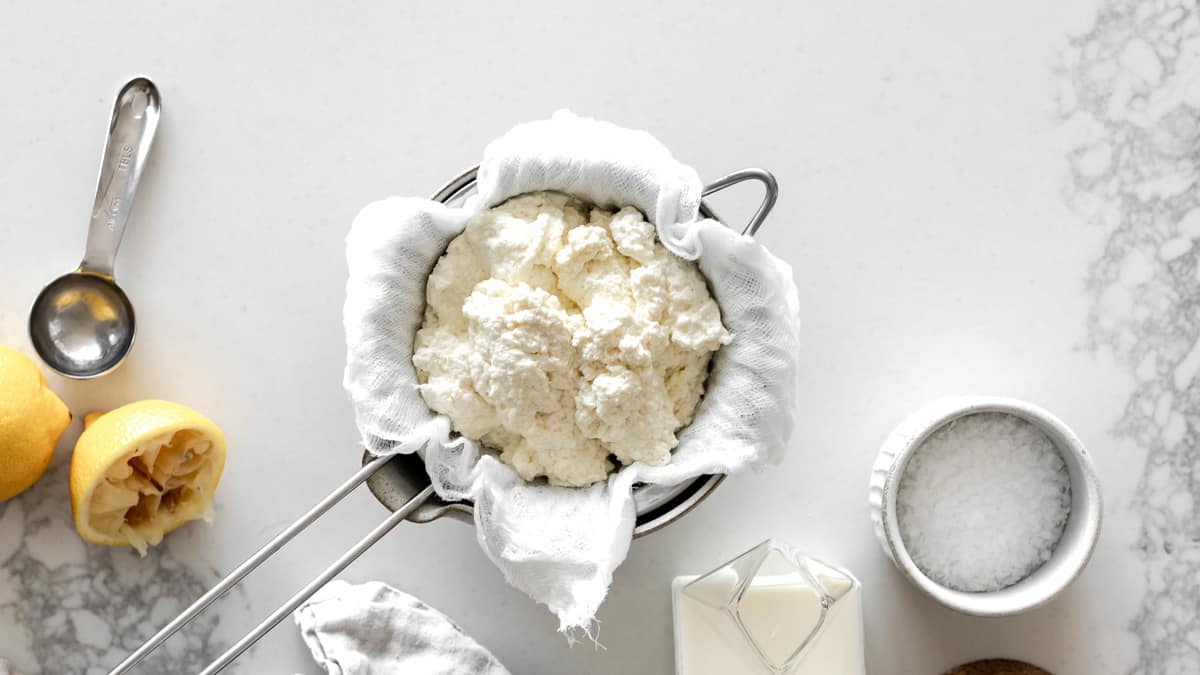
Is there anything better than fresh cheese – it’s a simple luxury that truly allows the essence of the food to shine. And when it comes to fresh cheese, did you know you can make your ricotta at home?
Using just three simple ingredients like whole cow’s milk, fresh lemon juice, and salt, our Fresh Homemade Ricotta Cheese recipe is a versatile cheese for many recipes. Our favorite ways to use our ricotta is on French Toast or Toast with Cherries, on salads like our Fig and Basil Panzanella, on pizzas like our Prosciutto Pizza, and even desserts, like our Cherry Cheesecake in a Jar.
Ingredients
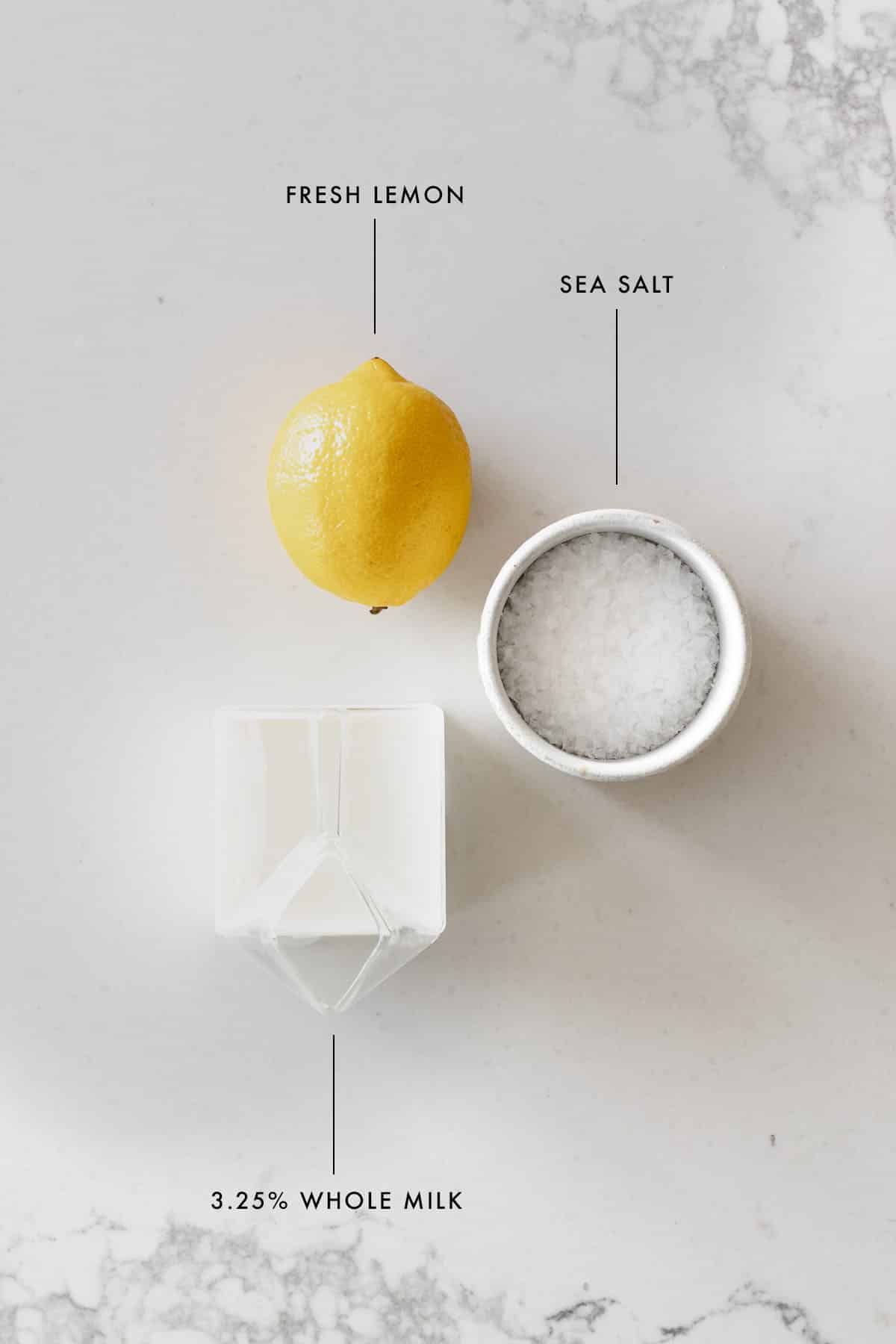
- Fresh Milk - 3.25% whole milk is the way to go here. Just ensure the milk is not ultra-filtered/ultra-pasteurized as it will not work properly.
- Sea Salt
- Fresh Lemon Juice - acidity is key so stay away from meyer lemons
Steps
Pour milk into a medium saucepan and stir in the salt. Place on medium heat to slowly bring the temperature of the milk up to 200°F, stirring occasionally.
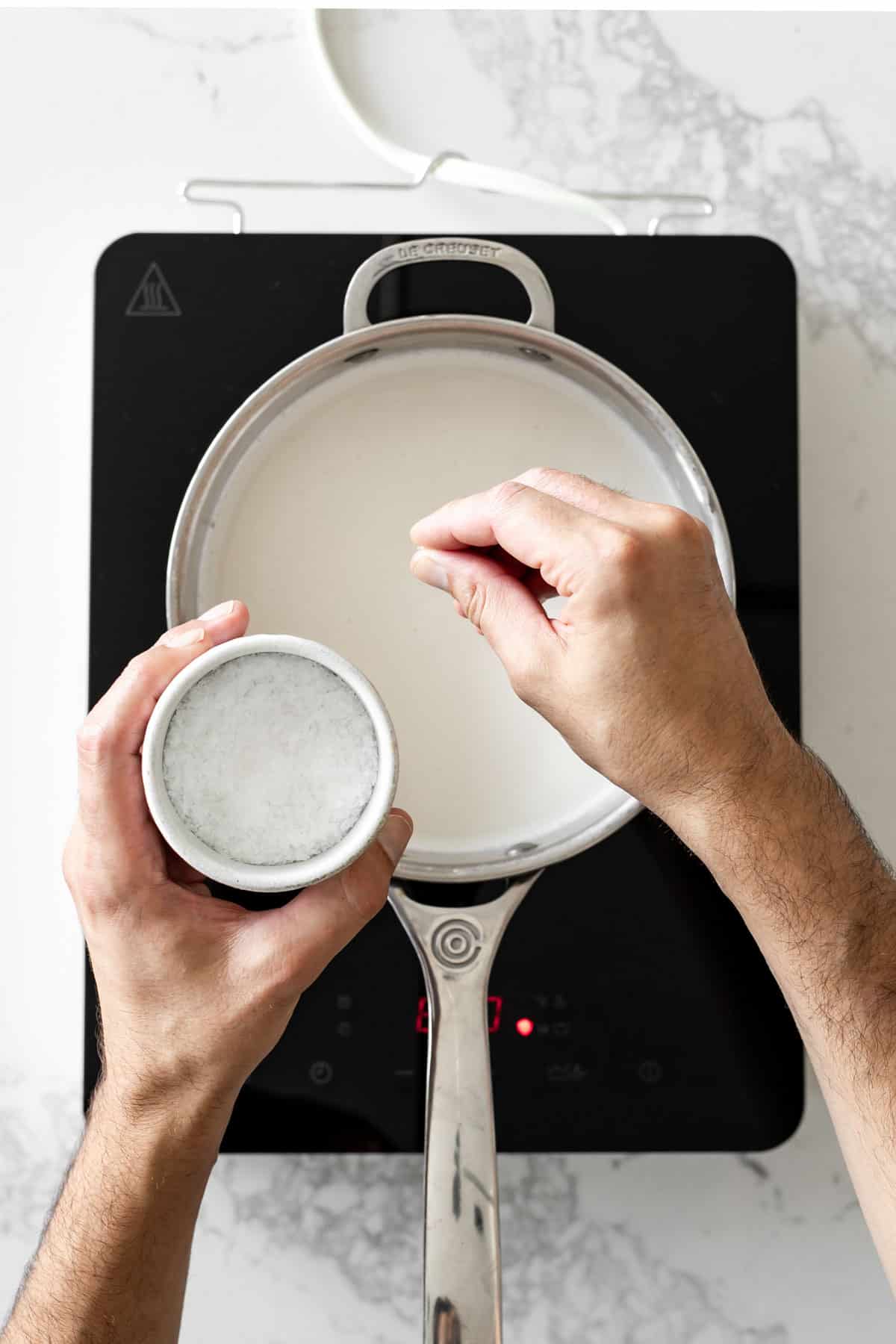
Pro Tip: If you don’t have a thermometer to measure the temperature, keep an eye on the milk. Once it is steaming, look for a light layer of foam and a few small simmering bubbles along the edges of the pot, then it is ready for the next step.
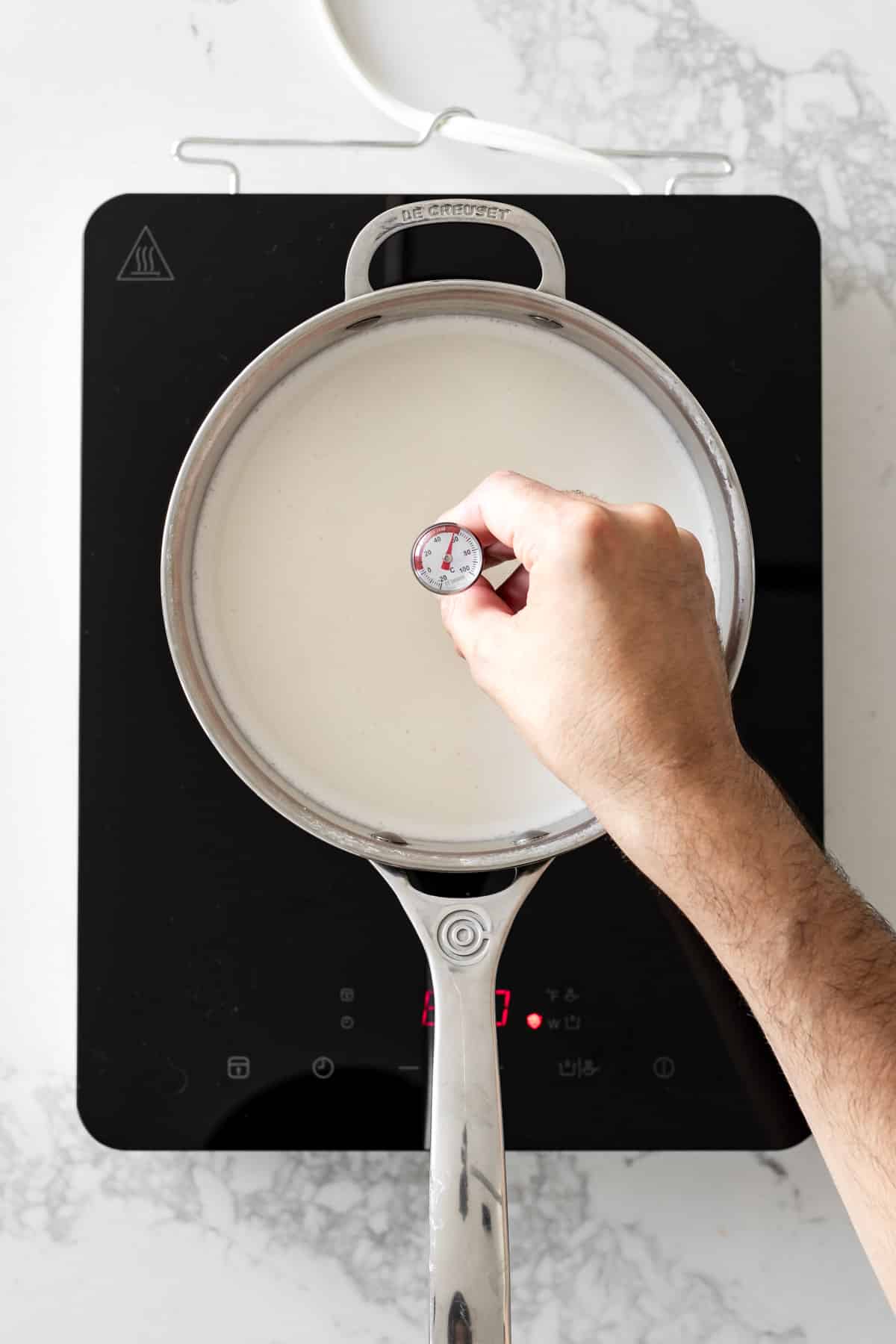
Lower the heat to its lowest setting to maintain the temperature around 200°F. Pour in the lemon juice and give it a quick stir.
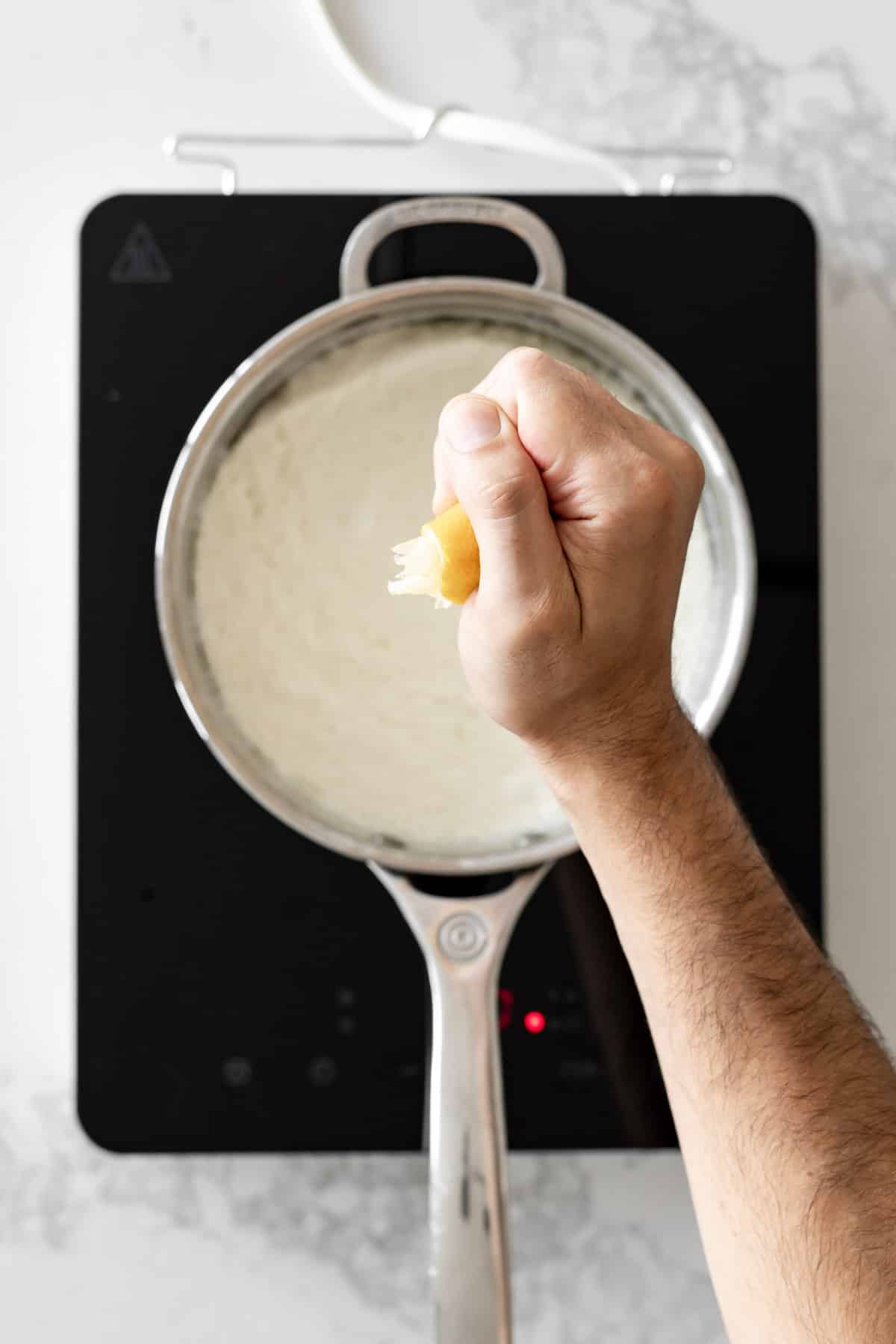
You should see curds start to form right away, the milk will curdle and separate from the whey, and if not, add a tablespoon or two of lemon juice. Let sit for 10 minutes.
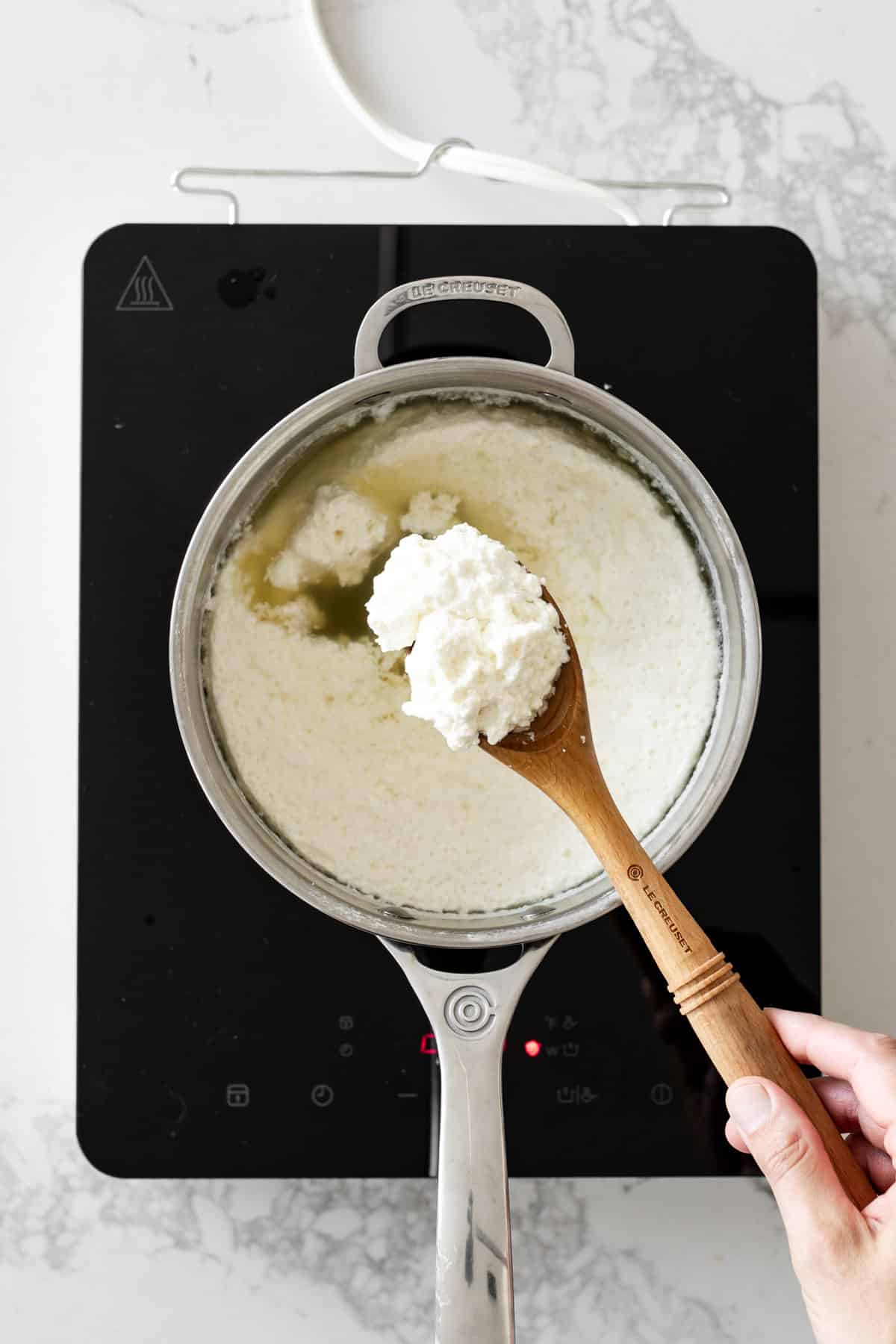
Meanwhile, dampen a piece of cheesecloth large enough to fit into a sieve or colander. Press the cheesecloth down into the sieve. Use a slotted spoon or ladle to gently transfer the curds to the cheesecloth. Allow to drain until it reaches the desired consistency.
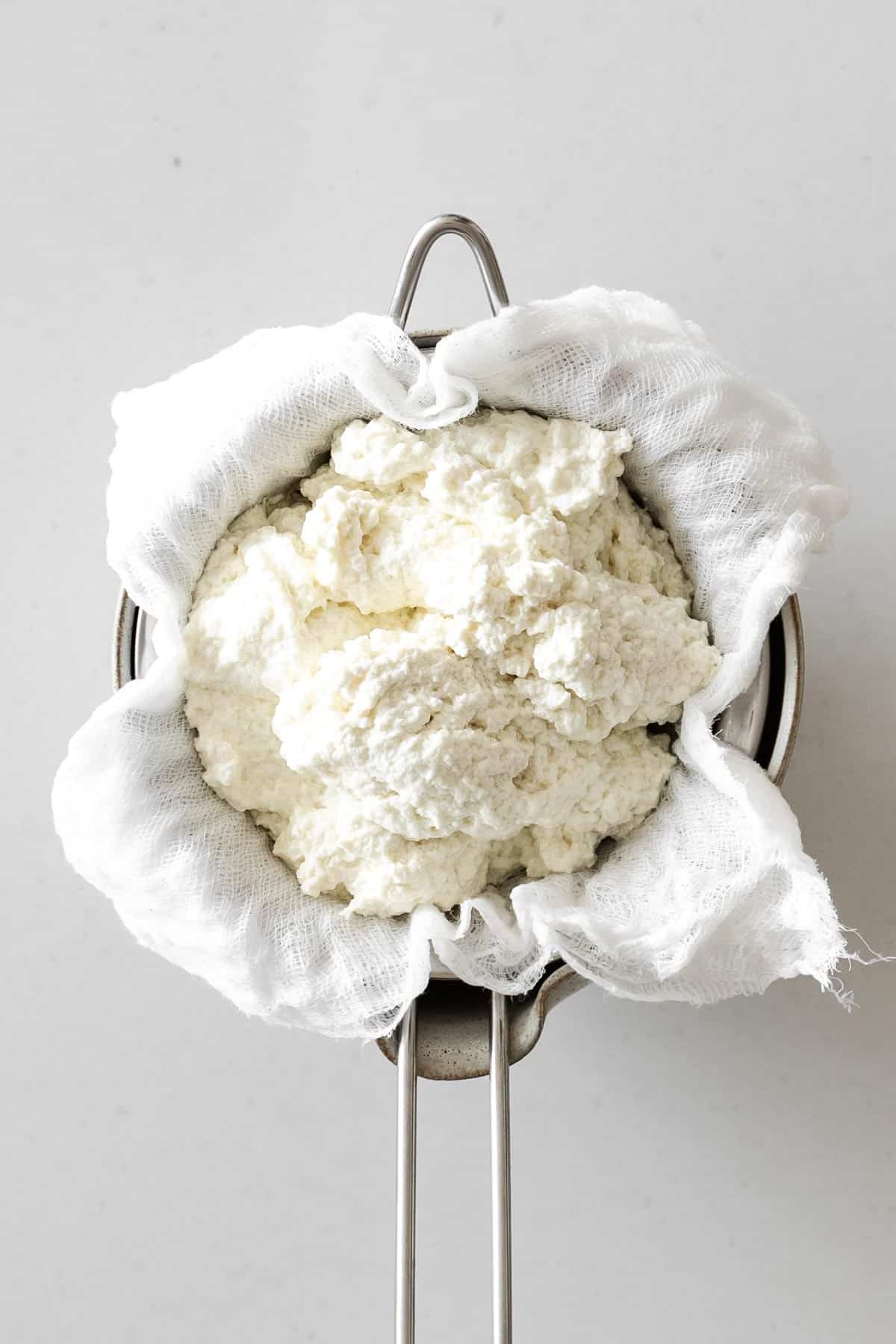
If you’re looking for a more loose and creamy homemade ricotta drain for 3 to 5 minutes. This consistency is great for dolloping on pasta or pizza, eating plain with fruit, or mixing into a shake. For something more spreadable to use for fresh ricotta toast or as a base for pizza drain for 8 to 10 minutes. If you need firm, drier ricotta for things like lasagna or ricotta cheesecake, drain for 20 minutes or longer.
FAQ's
What is ricotta cheese? Ricotta is a fresh cheese that translates to “recooked” or “cooked twice” in Italian. Bon Appetit explains that when you make cheese, you separate milk into two forms: solids called curds (which is the ricotta), and whey, which is the liquid that’s left behind. While it can be made from the milk of a cow, sheep, or goat, the most traditional ricotta you find in grocery stores is typically made from whole cow’s milk.
Will any milk work for making ricotta? No, ultra-filtered or ultra-pasteurized milk will not curdle and therefore will not work in making homemade ricotta cheese. For the best and most flavourful results use organic grass-fed milk with a 3.25% fat content.
What is whey? Whey is a protein found in milk. In the ricotta-making process, it is the yellow liquid left behind when the milk curdles and curds form. While it is often discarded it does have terrific uses.
What to do with leftover whey? Whey has a very nice flavor. Slightly sour, a little creamy (despite not looking creamy at all), leftover whey is great to use in making bread, pizza dough, soups, and stews.
Substitutions
- Milk - heavy cream or half-and-half can be used instead of milk and will result in an even creamier ricotta cheese.
- Lemon Juice - white vinegar, rice vinegar, or white wine vinegar can all be used to replace the lemon juice. Citric acid can also be used in place of lemon.
- Salt - we use Maldon sea salt for our recipe, but kosher salt will work as well.
Storage
Fridge - fresh ricotta will last about three days in the fridge. Simply transfer to a reusable container, cover, and enjoy as needed. You can also freeze the ricotta for a month or so.
Top tip
Be mindful in the kitchen and don’t rush the process. Heat the milk slowly so it doesn’t scald or burn, and use a ladle to separate the ricotta curds from the milk. If you try pouring it through the cheesecloth it will splash and create a mess, and also clog the sieve, costing you more time than necessary.
Recipe Card

Homemade Ricotta Cheese Recipe
Ingredients
- 2 l whole milk homogenized/3.25%
- ½ teaspoon sea salt
- ¼ cup fresh lemon juice
Instructions
- Pour milk into a medium saucepan and stir in the salt. Place on medium heat to slowly bring the temperature of the milk up to 200°F, stirring occasionally.
- Lower the heat to its lowest setting to maintain the temperature around 200°F. Pour in the lemon juice and give it a quick stir. You should see curds start to form right away, the milk will curdle and separate from the whey, and if not, add an additional tablespoon or two of lemon juice. Let sit for 10 minutes.
- Meanwhile, dampen a piece of cheesecloth large enough to fit into a sieve or colander. Press the cheesecloth down into the sieve. Use a slotted spoon or ladle to gently transfer the curds to the cheesecloth. Allow to drain until it reaches the desired consistency.
- Allow the ricotta to drain until it reaches your desired consistency (see notes)
Video
Recipe Notes
- If you don’t have a thermometer to measure the temperature, keep an eye on the milk. Once it is steaming, look for a light layer of foam and a few small simmering bubbles along the edges of the pot, then it is ready for the next step.
- If you’re looking for a more loose and creamy homemade ricotta drain for 3 to 5 minutes. This consistency is great for dolloping on pasta or pizza, eating plain with fruit or mixing into a shake. For something more spreadable to use for fresh ricotta toast or as a base for pizza drain for 8 to 10 minutes. If you need firm ricotta for things like lasagna or ricotta cheesecake, drain for 20 minutes or longer.

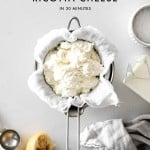
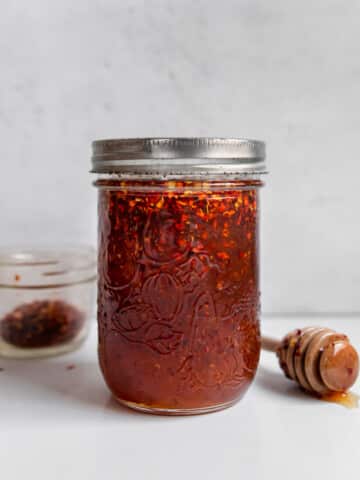


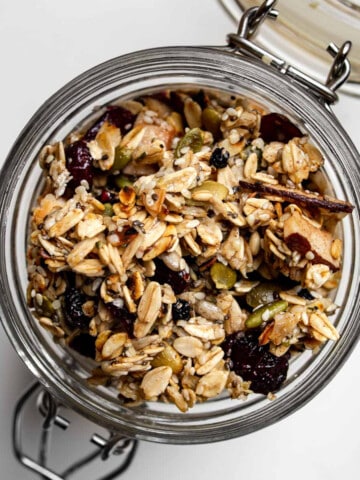
jean b. says
Simply delicious. I never knew it was so easy to make ricotta cheese at home, and for so much cheaper!